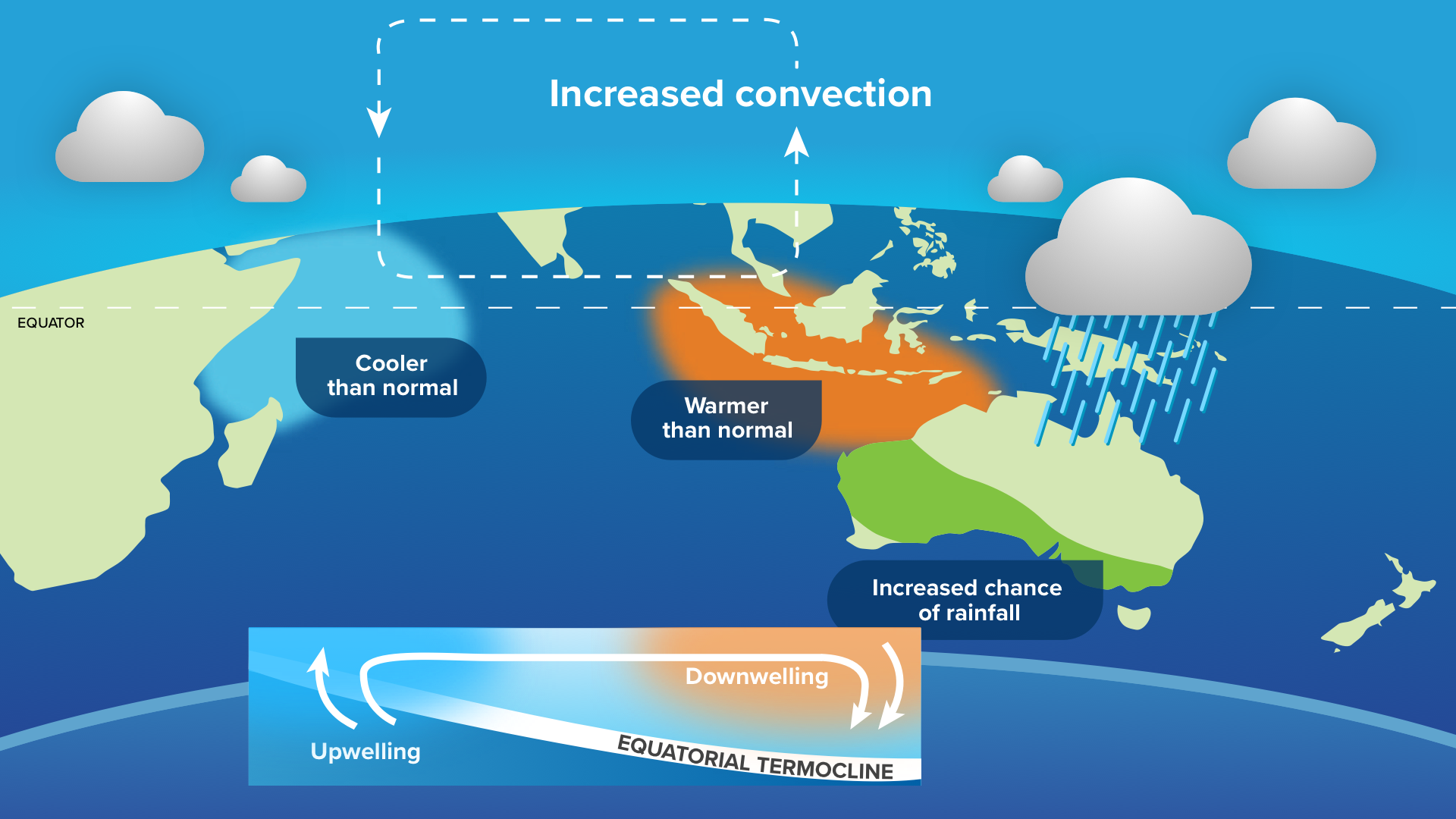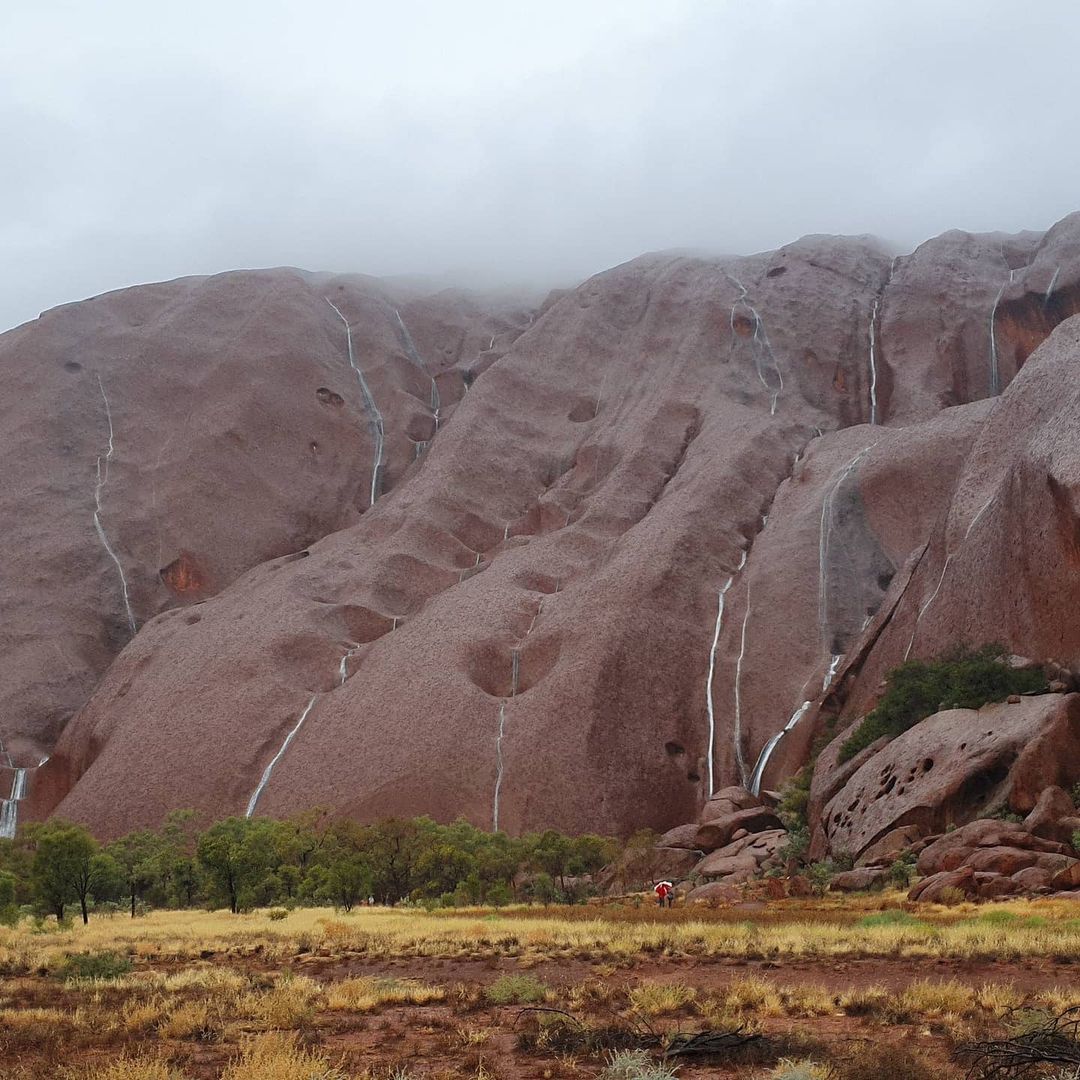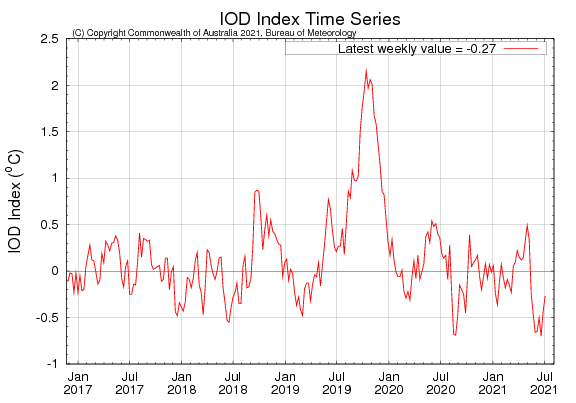Negative IOD delayed but not out of the picture
Large areas of Australia are tipped to see above average rain in the coming months, despite a recent change in ocean temperatures delaying the declaration of a negative Indian Ocean Dipole.
Over the last 6-7 weeks, sea surface temperatures across the Indian Ocean have been in a pattern climatologists refer to as a negative phase of the Indian Ocean Dipole (IOD).
This simply means that we have had warmer than average water on the eastern side of the Indian Ocean, near Indonesia, and cooler-than-average water on the western side, near the Horn of Africa.
.gif)
Image: Sea surface temperature anomalies across the Indian Ocean during the last month. The orange/red shading near Indonesia and the blue shading near the Horn of Africa form the distinctive pattern of a negative Indian Ocean Dipole. Source: NOAA
Negative IOD events are important for Australia, because they typically cause above average rain and below average daytime temperatures over large parts the country in winter and spring.

Image: Large areas of Australia usually see above-average rain during negative IOD events.
This is exactly what we saw last month, with a distinctive negative IOD pattern causing several northwest cloud bands and widespread rain in Australia. This included flooding in some states and soaking rain across the Red Centre.

Image: Waterfalls on Uluru after a bout of rain in late-June. Source: @tinabear22_ / Instagram.
However, the IOD index needs to stay below -0.4C for eight consecutive weeks to be officially declared as a negative IOD event. While we saw six consecutive weeks below this threshold between mid-May and late-June, the last week has ducked back into neutral territory thanks to recent warming in the western Indian Ocean.

Image: Observed IOD index values from the last several years. You can see the near-record strong positive IOD event that upderpinned Australia's hottest and driest year on record in 2019. By contrast, the most recent spell of negative IOD values on the right-hand side of the graph have brought welcome rain to many areas of Australia. Source: Bureau of Meteorology.
Despite this technicality, most forecast models suggest that this delay will be brief and a negative IOD is still more likely than not during late winter and early spring.
It's also worth pointing out that we have already been seeing typical impacts of a negative IOD in Australia during the last month, even without an event officially being declared.
The blue shading on the map below shows areas that saw rainfall in the top 20 percent of historical records during June. For Australia as a whole, it was the wettest June in five years.

Image: June was a wet month for large parts of the country. This map shows the observed rainfall deciles. Source: Bureau of Meteorology.
With the IOD expected to remain in a negative phase through the second half of winter and into spring, much of Australia has an increased change of above average rain, above average cloud cover and below average daytime temperatures in the next few months.